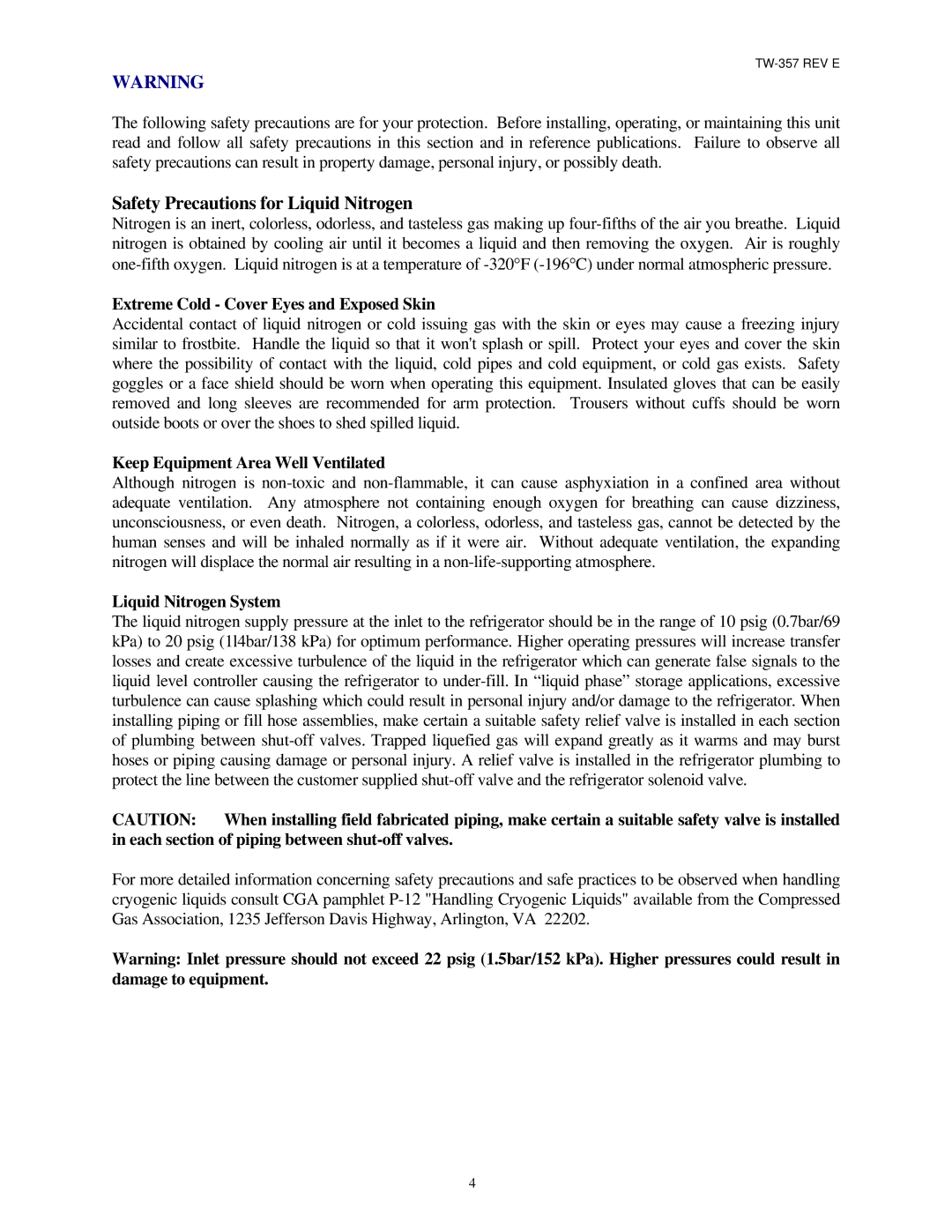TW-357 REV E
WARNING
The following safety precautions are for your protection. Before installing, operating, or maintaining this unit read and follow all safety precautions in this section and in reference publications. Failure to observe all safety precautions can result in property damage, personal injury, or possibly death.
Safety Precautions for Liquid Nitrogen
Nitrogen is an inert, colorless, odorless, and tasteless gas making up
Extreme Cold - Cover Eyes and Exposed Skin
Accidental contact of liquid nitrogen or cold issuing gas with the skin or eyes may cause a freezing injury similar to frostbite. Handle the liquid so that it won't splash or spill. Protect your eyes and cover the skin where the possibility of contact with the liquid, cold pipes and cold equipment, or cold gas exists. Safety goggles or a face shield should be worn when operating this equipment. Insulated gloves that can be easily removed and long sleeves are recommended for arm protection. Trousers without cuffs should be worn outside boots or over the shoes to shed spilled liquid.
Keep Equipment Area Well Ventilated
Although nitrogen is
Liquid Nitrogen System
The liquid nitrogen supply pressure at the inlet to the refrigerator should be in the range of 10 psig (0.7bar/69 kPa) to 20 psig (1l4bar/138 kPa) for optimum performance. Higher operating pressures will increase transfer losses and create excessive turbulence of the liquid in the refrigerator which can generate false signals to the liquid level controller causing the refrigerator to
CAUTION: When installing field fabricated piping, make certain a suitable safety valve is installed in each section of piping between
For more detailed information concerning safety precautions and safe practices to be observed when handling cryogenic liquids consult CGA pamphlet
Warning: Inlet pressure should not exceed 22 psig (1.5bar/152 kPa). Higher pressures could result in damage to equipment.
4
